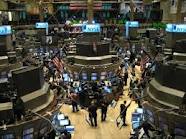
George Santayana said that those who do not learn from history are doomed to repeat it. The history of stock markets are fascinating and provides valuable lessons to the modern day investor. This post is a very, very brief overview of stock markets, their origins, and the early days.
The first financial instruments traded in the world were debt. The ancient Mesopotamian society created interest-bearing loans. In the Roman Republic, long before the existence of the Roman Empire, there were societates publicanorum, organizations of contractors or leaseholders who performed temple-building and other services for the government. Participants in such organizations had partes (i.e. parts) or shares. Tradable bonds as a commonly used type of security were a more recent innovation, spearheaded by the Italian city-states of the late medieval and early Renaissance periods.
War instigated the development and maturity of bonds as we know it today. Sometimes bonds were issued and sold to voluntary buyers and sometimes they were more like forced loans from the citizenry. Initially regarded with suspicion, it came to be seen as a valuable investment that could be bought and sold. The bond market had begun.
By the late 1500s, British merchants were experimenting with joint-stock companies intended to operate on an ongoing basis. Unofficial stock markets existed across Europe through the 1600s and brokers would meet at coffee houses to trade stocks and bonds. In 1602 the Dutch East India Company (Verenigde Oostindische Compagnie, or VOC) was formed and Amsterdam became the first official stock exchange. The VOC established the exchange and issued corporate VOC shares. Control of the company was held tightly by its directors, with ordinary shareholders not having much influence on management or even access to the company's accounting statements. However, the returns offered to early shareholders were lucrative, an average dividend of 16 percent per year from 1602 to 1650. Reinvesting the dividend back in shares would have earned an early investor 16 percent compound annually.
By the early 1700s there were fully operational stock exchanges in other parts of the world. Stock exchanges became an important way for companies to raise capital for investment, while also offering both investors and speculators the opportunity to share in company profits and benefit from the fluctuations of stock prices. New techniques and instruments quickly proliferated for securities as well as commodities, including options, repos and margin trading. Sophistication and opportunity quickly grew in the markets.
Since inception stock markets have attracted both investors and speculators. The first author known to have published a book on stock markets and investing was Joseph de la Vegain in 1688. His book Confusion of Confusions explained the workings of stock markets, he warned about the potential excesses, he described stock trading, he highlighted the unpredictability of market shifts, and he explained the importance of patience in investment. Since the early days people were trying to formula strategies to better investing...and speculation.
The first speculative stock market bubble was Tulip Mania during the Dutch Golden Age. It lasted 4 months with its peak in February 1637, when a single tulip bulbs sold for more than 10 times the annual income of a skilled craftsman. Many people lost everything in the mad rush to make money. The British journalist Charles Mackay’s wrote the book Extraordinary Popular Delusions and the Madness of Crowds in 1841 to describe the bubble and the behaviour of speculators witnessed at the time. The behaviour he describes is still common today. The second big bubble occurred a few decades later. At the center of it were the South Sea Company, set up in 1711 to conduct English trade with South America, and the Mississippi Company, focused on commerce with France's Louisiana colony. Investors (... and speculators) snapped up shares in both, and whatever else was available. In 1720, at the height of the mania, there was even an offering of a company for carrying out an undertaking of great advantage, but nobody to know what it is. By the end of that same year, share prices were collapsing, as it became clear that expectations of imminent wealth from the Americas were overblown. In London, Parliament even passed the Bubble Act, to stop people issuing shares to unsuspecting investors (... and speculators).
Since those early days different approaches to investment and speculation have been formulated. Many people proposed approaches which, on paper, would yield grand returns. However, the markets were dominated by speculation, insider information, and other practices which could at best be described as unethical and borderline criminal. Then, in the early 20th century, Benjamin Graham changed all that, which I will write about in my next post.
Be Extraordinary!
Myles
The first financial instruments traded in the world were debt. The ancient Mesopotamian society created interest-bearing loans. In the Roman Republic, long before the existence of the Roman Empire, there were societates publicanorum, organizations of contractors or leaseholders who performed temple-building and other services for the government. Participants in such organizations had partes (i.e. parts) or shares. Tradable bonds as a commonly used type of security were a more recent innovation, spearheaded by the Italian city-states of the late medieval and early Renaissance periods.
War instigated the development and maturity of bonds as we know it today. Sometimes bonds were issued and sold to voluntary buyers and sometimes they were more like forced loans from the citizenry. Initially regarded with suspicion, it came to be seen as a valuable investment that could be bought and sold. The bond market had begun.
By the late 1500s, British merchants were experimenting with joint-stock companies intended to operate on an ongoing basis. Unofficial stock markets existed across Europe through the 1600s and brokers would meet at coffee houses to trade stocks and bonds. In 1602 the Dutch East India Company (Verenigde Oostindische Compagnie, or VOC) was formed and Amsterdam became the first official stock exchange. The VOC established the exchange and issued corporate VOC shares. Control of the company was held tightly by its directors, with ordinary shareholders not having much influence on management or even access to the company's accounting statements. However, the returns offered to early shareholders were lucrative, an average dividend of 16 percent per year from 1602 to 1650. Reinvesting the dividend back in shares would have earned an early investor 16 percent compound annually.
By the early 1700s there were fully operational stock exchanges in other parts of the world. Stock exchanges became an important way for companies to raise capital for investment, while also offering both investors and speculators the opportunity to share in company profits and benefit from the fluctuations of stock prices. New techniques and instruments quickly proliferated for securities as well as commodities, including options, repos and margin trading. Sophistication and opportunity quickly grew in the markets.
Since inception stock markets have attracted both investors and speculators. The first author known to have published a book on stock markets and investing was Joseph de la Vegain in 1688. His book Confusion of Confusions explained the workings of stock markets, he warned about the potential excesses, he described stock trading, he highlighted the unpredictability of market shifts, and he explained the importance of patience in investment. Since the early days people were trying to formula strategies to better investing...and speculation.
The first speculative stock market bubble was Tulip Mania during the Dutch Golden Age. It lasted 4 months with its peak in February 1637, when a single tulip bulbs sold for more than 10 times the annual income of a skilled craftsman. Many people lost everything in the mad rush to make money. The British journalist Charles Mackay’s wrote the book Extraordinary Popular Delusions and the Madness of Crowds in 1841 to describe the bubble and the behaviour of speculators witnessed at the time. The behaviour he describes is still common today. The second big bubble occurred a few decades later. At the center of it were the South Sea Company, set up in 1711 to conduct English trade with South America, and the Mississippi Company, focused on commerce with France's Louisiana colony. Investors (... and speculators) snapped up shares in both, and whatever else was available. In 1720, at the height of the mania, there was even an offering of a company for carrying out an undertaking of great advantage, but nobody to know what it is. By the end of that same year, share prices were collapsing, as it became clear that expectations of imminent wealth from the Americas were overblown. In London, Parliament even passed the Bubble Act, to stop people issuing shares to unsuspecting investors (... and speculators).
Since those early days different approaches to investment and speculation have been formulated. Many people proposed approaches which, on paper, would yield grand returns. However, the markets were dominated by speculation, insider information, and other practices which could at best be described as unethical and borderline criminal. Then, in the early 20th century, Benjamin Graham changed all that, which I will write about in my next post.
Be Extraordinary!
Myles


 RSS Feed
RSS Feed